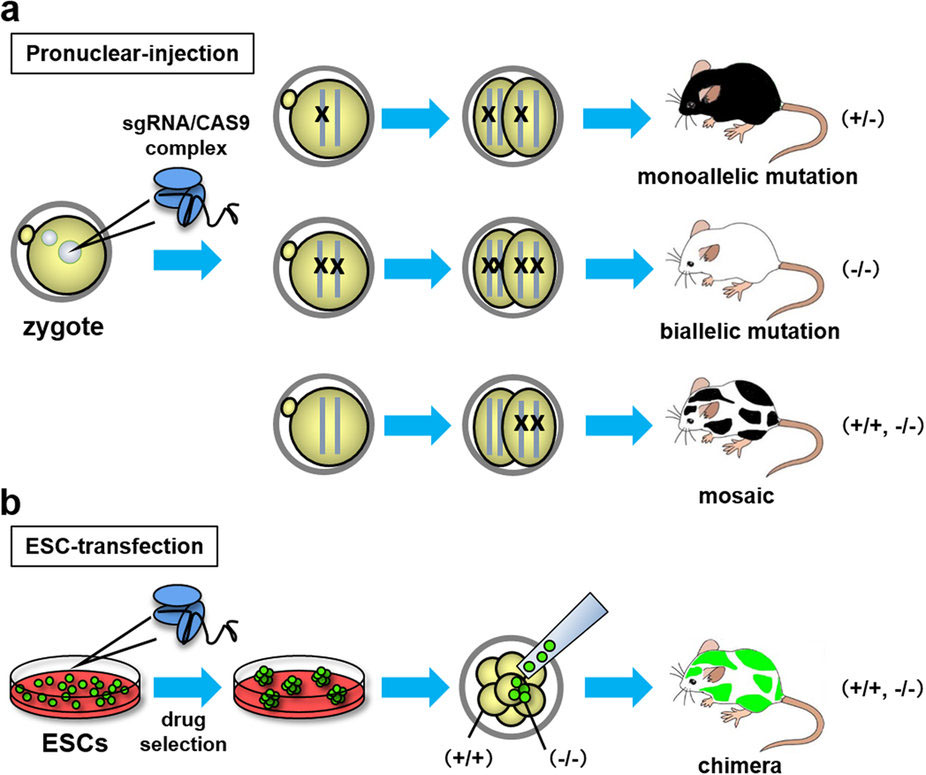Research Abstract
ES細胞におけるCRISPR/Cas9ゲノム編集とキメラマウスを用いた遺伝子機能解析への応用
CRISPR/Cas9 mediated genome editing in ES cells and its application for chimeric analysis in mice
2016年8月17日 Scientific Reports 6 : 31666 doi: 10.1038/srep31666

標的遺伝子を破壊したマウスは、受精卵に単一ガイドRNA(sgRNA)/CAS9複合体を発現させることで、効率的に作製できる。しかし、大規模な欠失、点変異、ノックインなどの複雑なゲノム編集は、受精卵では限定的な成功しか収めておらず、改良の余地がある。さらに、受精卵でゲノム編集した動物では、ファウンダー世代のモザイク現象が遺伝子型や表現型の解析を複雑にしている。今回我々は、マウスの胚性幹(ES)細胞において、2つのsgRNAを用いる大規模欠失やdsDNAによる点変異が効率的に導入できることを示す。また、ES細胞ではdsDNAを用いた遺伝子ノックインも可能であった。さらに、致死遺伝子Dnajb13の両アレル変異を持つES細胞からキメラマウスを作製し、その表現型を解析したところ、水頭症の致死表現型が抑制されただけではなく、Dnajb13が精子繊毛形成にも必要であることが分かった。ES細胞における両アレルゲノム編集とその後のキメラ解析を組み合わせることは、個体における迅速な遺伝子機能解析のための有益なツールになる。
Corresponding Author
Targeted gene disrupted mice can be efficiently generated by expressing a single guide RNA (sgRNA)/CAS9 complex in the zygote. However, the limited success of complicated genome editing, such as large deletions, point mutations, and knockins, remains to be improved. Further, the mosaicism in founder generations complicates the genotypic and phenotypic analyses in these animals. Here we show that large deletions with two sgRNAs as well as dsDNA-mediated point mutations are efficient in mouse embryonic stem cells (ESCs). The dsDNA-mediated gene knockins are also feasible in ESCs. Finally, we generated chimeric mice with biallelic mutant ESCs for a lethal gene, Dnajb13, and analyzed their phenotypes. Not only was the lethal phenotype of hydrocephalus suppressed, but we also found that Dnajb13 is required for sperm cilia formation. The combination of biallelic genome editing in ESCs and subsequent chimeric analysis provides a useful tool for rapid gene function analysis in the whole organism.

